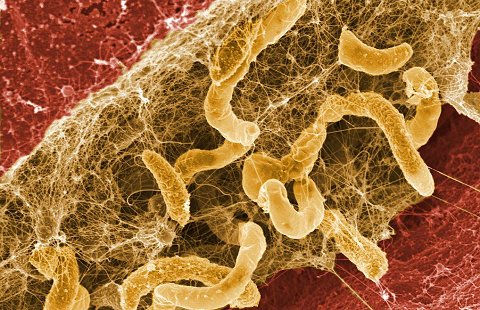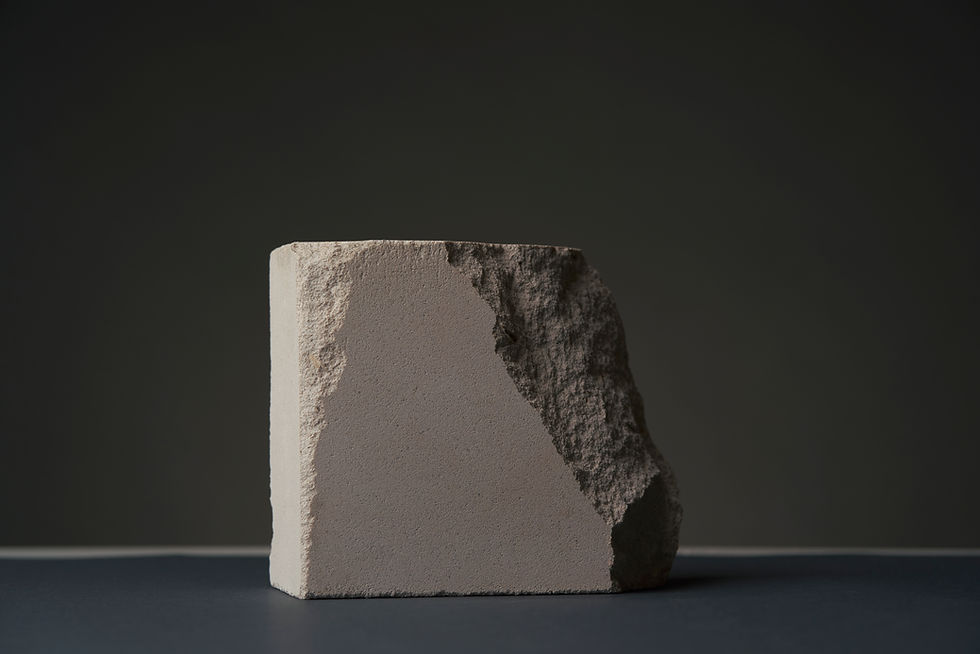Silent Destroyers: Microbes of Concrete Corrosion
- Sylvia Rose

- Nov 2, 2024
- 5 min read
The microbes of concrete corrosion include bacteria, fungi and algae. Their purpose in life is to break down and decompose matter, and they have surprising ways of doing it. They dwell on rust and concrete, in homes, infrastructures and public buildings.

Meet the Microbes
The microorganisms of concrete corrosion are diverse and can be generally grouped into bacteria, fungi, and algae. Primary groups and species include:
Bacteria:
Sulfate-reducing bacteria (SRB), such as Desulfovibrio and Desulfotomaculum, are lethal warriors of concrete corrosion. These bacteria thrive in anaerobic environments and produce sulfide ions, leading to increased environmental acidity and corrosion.
They convert sulfate into hydrogen sulfide, a highly corrosive substance. Sulfur reducing bacteria can reduce concrete strength by up to 20% within a few months.
Some have a drastic effect on health. High amounts of Desulfovibrio bacteria, for example, are associated with inflammatory bowel disease, bacteremia infections and Parkinson's disease.

Fungi:
Certain fungi colonize concrete surfaces, breaking down organic materials. Their release of organic acids contributes to deterioration of concrete. Aspergillus and Penicillium fungi inhabit concrete and release organic acids that dissolve calcium hydroxide.
According to experts, the presence of these fungi can lead to a deterioration rate exceeding 10% per year in certain conditions. Health conditions caused by Aspergillus include Aspergillosis, with respiratory illness including coughing blood.
Conditions causing these molds to prosper are fertile breeding grounds for other kinds of molds, fungi, bacteria and other microorganisms. Sulfuric-acid-producing bacteria also work on metal decomposition or rust.

Algae and Cyanobacteria
These photosynthetic organisms can produce organic acids which erode concrete. They are masters of biofilm creation, enhancing the retention of moisture and promoting further microbial colonization.
Algae do not directly corrode concrete but can create the slimy layer which traps moisture and fosters bacterial growth. This indirect effect can triple the rate of deterioration in humid climates.

The process of microbial corrosion occurs in several stages:
Colonization & Biofilm Formation
Microbes settle on the surface of the concrete, often forming biofilms, which provide a protective environment makes them harder to remove. Plaque on teeth is a biofilm.
Microorganisms attach to the concrete surface, aided by moisture and nutrients. One sample test reveals that biofilm formation can happen within just 24 hours of exposure to microbial favorable conditions.
Biofilms in nature and concrete are often slimy layers of microbial colonies. These biofilms can raise the local concentration of corrosive substances, amplifying the damage.

Acid Production
As microbes metabolize nutrients, they produce organic and inorganic acids. For example, sulfate-reducing bacteria convert sulfate into hydrogen sulfide (H2S), which then reacts with the calcium hydroxide in concrete, forming soluble calcium sulfide.
Texture Alteration
The acids produced by microbial metabolism lead to the leaching of essential minerals, weakening the concrete structure. Calcium is often one of the first elements to be depleted, resulting in increased porosity and decreased structural integrity.

Expansion of Cracks
As concrete deteriorates, existing cracks may widen, providing more surface area for microbial colonization and allowing more moisture infiltration, creating a cycle of ongoing damage.
Metabolic Activity
Microorganisms metabolize nutrients and produce byproducts like acids. These byproducts penetrate the concrete and trigger chemical reactions that can compromise its strength.
Deterioration
Over time, corrosive waste accumulates, leading to micro-cracks, which can develop into larger fissures, compromising the entire structure. Studies have shown that repeated cycles of microbial activity can cut the lifespan of concrete structures in half.

Microbial processes lead to several critical chemical reactions that directly influence concrete corrosion, including:
Production of Organic Acids: Microbial breakdown of organic materials results in the release of acids such as acetic acid and lactic acid, which can further react with calcium carbonate in concrete. Fungi produce acids like citric and oxalic acid. These acids can decrease the compressive strength of concrete by nearly 15% within two months.
Sulfate Reduction: Sulfate-reducing bacteria convert sulfate into hydrogen sulfide, dissolving calcium compounds in the material. This leads to formation of corrosive byproducts reacting with concrete components, creating increased acidity and a degradation rate of up to 25%.
Calcite Dissolution: The increase in carbon dioxide concentration from microbial respiration leads to the formation of carbonic acid, which further reduces the pH, facilitating the leaching of calcium carbonate and loss of structural integrity.
Nitrogen Cycle Interaction: Certain bacteria can also convert nitrogen compounds into acidic forms, which when combined with moisture can exert degrading effects on concrete.
Ammonia Production: Some bacteria generate ammonia, altering the concrete's pH and leading to leaching of vital minerals. This can dramatically affect the structural integrity of concrete.

Facts About Microbial Concrete Corrosion
Widespread Impact: Microbial corrosion is not limited to sewage treatment plants or marine environments; it can occur in any moist environment where concrete is present, including tunnels, bridges, and underground structures.
Costly Consequences: Research estimates indicate that microbial-induced corrosion can lead to repair costs that total billions annually worldwide due to infrastructure failures.
Preventive Measures: Effective strategies to mitigate microbial corrosion include improving drainage systems, using corrosion-resistant materials, employing protective coatings, and applying biocides in particularly vulnerable environments.
Research Advances: Ongoing studies into microbial interactions with concrete aim to optimize concrete formulations and develop treatment protocols to protect concrete structures from biocorrosion.
Importance of Maintenance: Routine inspections and maintenance are critical in identifying microbial colonization early and addressing it before significant damage occurs.
Hidden Threat: Microbial corrosion can often go undetected for years, delaying crucial repairs and maintenance that can cost up to 70% more when finally addressed.
Economic Impacts: The repair costs for concrete structures affected by microbial corrosion can reach several billion dollars annually worldwide. This includes costs for replacement and lost operational time.
Global Prevalence: Microbial corrosion is widespread and not limited to specific ecosystems. It occurs in coastal cities, sewage treatment plants, and freshwater systems, affecting nearly 40% of concrete structures in these environments.
Mitigation Techniques: Innovations such as incorporating antimicrobial agents into concrete mixes and using bio-resistant materials are emerging solutions. Initial trials showed a reduction in microbial growth by up to 50% in treated concrete.
Research and Development: Ongoing studies focus on optimizing concrete mixtures to resist microbial interactions, contributing to more sustainable and durable construction practices.

Non-Fiction Books:
Fiction Books:
READ: Lora Ley Adventures - Germanic Mythology Fiction Series
READ: Reiker For Hire - Victorian Detective Murder Mysteries


